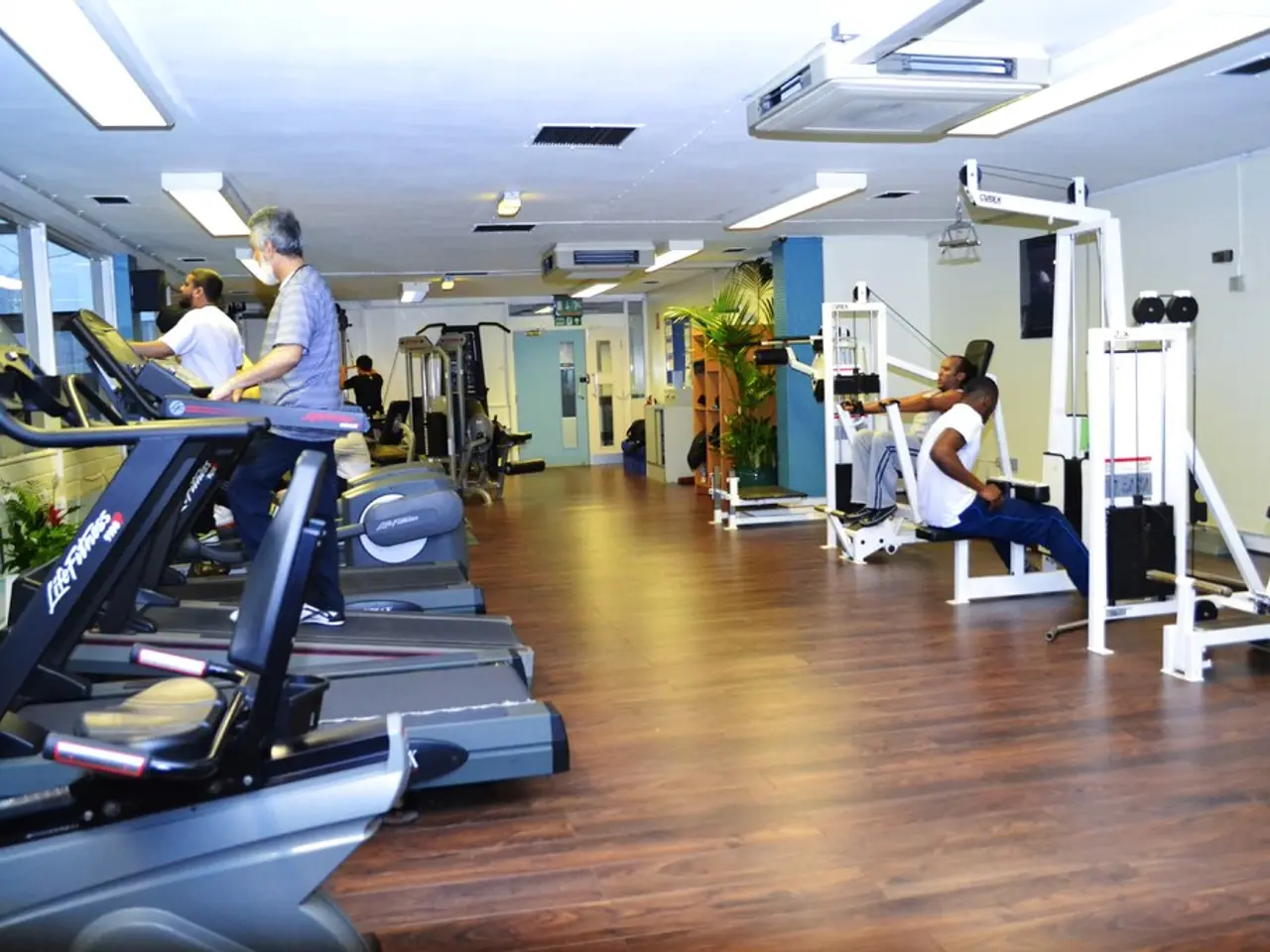Essential Physical Moves Every Man Past Fifty Should Master for a Long Life
=========================================================================================
Strength training is a vital tool for maintaining capability and resilience in later life. As men age, their muscle mass naturally declines, bones lose density, and recovery takes longer [1]. However, strength training can counteract these age-related changes, offering significant benefits such as increased muscle strength and mass, improved bone density, enhanced joint stability, reduced risk of injury, better mobility, and overall improved quality of life and independence [1][2][3].
Key Benefits of Strength Training for Men Over 50
- Counteracting age-related muscle loss to maintain strength and metabolic health [1][5].
- Strengthening bones to reduce osteoporosis and fracture risks, crucial after 50 [2].
- Improving joint support and stability, lowering risk of joint wear and injury [2][1].
- Enhancing movement, balance, and coordination, which helps preserve daily function and reduces pain [2][3].
- Boosting confidence, energy, and long-term independence, enhancing quality of life considerably [1][3].
Four Recommended Strength Moves for Men Over 50
- Sit-to-Stand Exercise
- This move strengthens lower-body muscles vital for mobility and joint protection [4]. From a seated position, stand up without using your hands and then slowly return to sitting.
- Bodyweight Squats (with Chair Support if Needed)
- Builds strength in legs, glutes, and hips, supporting joints and improving functional movements like climbing stairs or standing from a chair [4]. Perform squats using a chair behind you for safety.
- Standing Side Toss (Medicine Ball Twist)
- Develops torso strength and rotational power, which supports core stability and spinal joint protection [4]. Stand sideways to a wall, holding a lightweight ball near the hip farthest from the wall, then twist and throw the ball against the wall.
- Standard Resistance Training Moves Focused on Major Muscle Groups
- Examples: Dumbbell or barbell exercises like rows, presses, deadlifts, or lunges adapted to fitness level. These increase muscle mass, bone density, and joint stability holistically [1][2][5]. Focus on proper form and injury prevention especially important in men over 50 to maintain progression over time [1].
Tips for Safe and Effective Strength Training
- Prioritize compound movements: Focus on exercises that train multiple muscle groups at once, like squats, rows, and presses [6].
- Form Tip: Keep your lower back pressed firmly into the floor during each rep [7].
- Don't skip recovery: Prioritize rest days, quality sleep, and mobility work to help your body repair and perform better [8].
- Progress gradually: Increase weight, reps, or sets over time to keep challenging your muscles [9].
- Recommended Sets and Reps: Perform 3 sets of 10 to 12 reps per side. Rest 30 to 45 seconds between sets [10].
Incorporating these recommended exercises and following best practices for strength training can help men over 50 maintain their physical capabilities, reduce the risk of injury, and improve their quality of life.
References:
[1] American College of Sports Medicine (ACSM) (2019). ACSM's Guidelines for Exercise Testing and Prescription. Lippincott Williams & Wilkins.
[2] National Institute on Aging (2019). Exercise and Physical Activity: Your Everyday Guide from the National Institute on Aging. U.S. Department of Health and Human Services.
[3] Centers for Disease Control and Prevention (CDC) (2019). Physical Activity for Older Adults: Benefits, Tips, and Safety.
[4] American Council on Exercise (ACE) (2018). ACE's Integrated Fitness Training Manual. American Council on Exercise.
[5] National Strength and Conditioning Association (NSCA) (2018). Essentials of Strength Training and Conditioning. Human Kinetics.
[6] National Academy of Sports Medicine (NASM) (2018). Essentials of Personal Fitness Training. Human Kinetics.
[7] National Academy of Sports Medicine (NASM) (2018). Optimum Performance Training for Older Adults. Human Kinetics.
[8] National Academy of Sports Medicine (NASM) (2018). Essentials of Corrective Exercise Training and Performance. Human Kinetics.
[9] National Academy of Sports Medicine (NASM) (2018). Essentials of Personal Fitness Training. Human Kinetics.
[10] American Council on Exercise (ACE) (2018). ACE's Integrated Fitness Training Manual. American Council on Exercise.
- Regular workout routines, such as strength training, can contribute positively to mental health and overall well-being, promoting better sleep and increasing energy levels [11].
- Incorporating yoga into a fitness-and-exercise regimen can improve flexibility, balance, and stress management, contributing to improved mental health and longevity [12].
- Studies show that proper exercise, combined with a balanced diet, can help prevent age-related cognitive decline, further emphasizing the importance of maintaining a regular fitness schedule [13].
- Science suggests that incorporating both cardio exercise and strength training in a health-and-wellness routine leads to optimal fitness outcomes for overall health and longevity [14].
- Opting for low-impact exercises like swimming or cycling can provide an effective alternative to high-impact workouts like running, offering similar benefits while reducing the risk of joint wear and injury [15].




